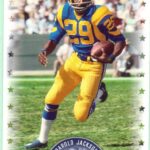2011 Australian Open: Will Roger Federer Win His Fifth Down Under?
Winning this year’s Australian Open conceivably paves the way for a great year for Roger Federer, allowing him to win his fifth Australian Open title in 12 years of hard-fought competition in Melbourne Park.
Except for 2010, Federer’s most productive years came when he started the year by winning the Australian Open.
Federer has won six Wimbledon titles, five U.S. Open Championships, four Australian Open titles and one French Open Championship.
Currently, Federer holds 16 career grand slam singles titles, a record for male tennis players.
During each of the past eight years, Federer has won at least one grand slam title, winning his first in 2003 and his last in 2010. Both years, he won only one major.
In 2004, Federer won three slams. In 2006 and 2007 Federer again won three of the four majors.
The act of winning in Melbourne re-focused Federer on his dream to win a career calendar year grand slam, like Aussie Rod Laver in 1969.
As he nears 30, Federer once again seeks to capitalize on his newfound confidence and zeal for the game by winning again in Australia.
The Swiss wishes to advance his current World No. 2 ranking.
Federer hopes to enhance his position during the remainder of 2011 when he has fewer ranking points to defend while Rafael Nadal, the current World No. 1, has many.
Year 1: Roger Federer in the 2000 Australian Open
Roger Federer entered men’s professional tennis as the No. 1 ranked junior in 1998.
The Swiss possessed enormous talent. The world waited for Federer to break through to become the champion they expected.
But like all good things, the Swiss needed to season his talent.
Federer first participated in the Australian Open in 2000, ranked World No. 66, after failing to qualify the previous year.
That year, the No. 1 seed at the Australian Open was Andre Agassi who did, in fact, win that year.
Federer entered unseeded in Melbourne in 2000.
In the first round, the Swiss defeated American Michael Chang 6-4, 6-4, 7-6.
Jan Kroslak of Slovakia was Federer’s opponent in the second round. The Swiss won that match 7-6, 6-2, 6-3.
In the third round, Federer faced Arnaud Clement, ranked World No. 49 at the time.
Federer lost that match to the Frenchman 6-1, 6-4, 6-3, ending his run at the Australian Open in his first year of competition down under.
Year 2: Roger Federer in the 2001 Australian Open
The No. 1 seed at the 2001 Australian Open was Gustavo Kuerten.
Kuerten, however, did not make the finals. Andre Agassi met Arnaud Clement in the final and defeated the Frenchman to win the trophy.
By January of 2001 Federer was beginning to have some successes on tour.
A highlight for Federer came when he teamed with fellow Swiss Marina Hingis to win the Hopman Cup in 2001.
After that, Federer traveled to Melbourne to participate in the 2001 Australian Open where the Swiss faced three Frenchmen in a row.
In the first round, Federer dismissed Arnaud Di Pasquale 6-4, 4-6, 6-1, 6-4.
In the second round, Nicolas Escude fell victim to the Swiss 6-1, 6-4, 6-4.
Then, once again facing Arnaud Clement, Federer lost in the third round, 7-6, 6-4, 6-4, ending his second year of competition at the Australian Open.
Year 3: Roger Federer in the 2002 Australian Open
Roger Federer ended 2001 ranked No. 13 in the world after continuing to improve his game on tour.
In 2002 Federer entered the Australian Open seeded No. 11.
Aussie Lleyton Hewitt was the No. 1 seed. Neither Federer nor Hewitt, however, would win the trophy that year.
The winner in 2002 was the No. 16 seed Thomas Johansson who upended the No. 9 seed Russian Marat Safin in the final––a real surprise.
Federer, however did progress further than he had in his two previous forays into the Melbourne draw.
In the first round, Federer defeated American Michael Chang in straight sets 6-4, 6-4, 6-3.
Following that win, in the second round Federer met and defeated Hungarian Atilla Savolt 6-2, 7-5, 6-4.
German Rainer Schuttler was Federer’s opponent in the third round. This time Federer won 7-6, 7-6, 6-4 to advance into the fourth round for the first time.
There, Federer met another German, Tommy Haas.
Federer lost to the No. 7 seed Haas 7-6, 4-6, 3-6, 6-4, 8-6.
This ended Federer’s third attempt to make the Aussie finals.
Year 4: Roger Federer in the 2003 Australian Open
By 2003, Federer’s critics were growing more vocal, wondering why the Swiss never succeeded in the majors.
Federer garnered wins on tour, but never at the four slams.
Some suggested the Swiss did not have the necessary heart to break through at the big tournaments.
In his fourth appearance at the Australian Open in 2003, Federer once again made it to the fourth round.
This time the Swiss was seeded No. 6 coming into the tournament.
Lleyton Hewitt was again the No. 1 seed, but once again the Aussie did not win the title.
That honor went to American Andre Agassi, who defeated German Rainer Schuttler in the final.
Federer, after dispatching Brazilian Flavio Saretta in the first round, German Lars Burgsmuller in the second round and Swede Andreas Vinciguerra in the third round, met his oft nemesis David Nalbandian in the fourth round.
Once again the Argentine blocked Federer’s path and sent the Swiss back home as he lost 6-4, 3-6, 6-1, 1-6, 6-3.
It was another bitter disappointment at the hands of Nalbandian as Federer ended his fourth Australian Open.
Year 5: Roger Federer in the 2004 Australian Open
Finally, Federer had exorcised his slam curse in 2003.
He fulfilled his promise to be a winner by capturing his first major—the 2003 Wimbledon Championship.
Although the Swiss did not win in New York, Federer came to the 2004 Australian Open seeded No. 2 behind Andy Roddick.
But this year, buoyed by his win at Wimbledon, Federer would go all the way to the final where he would meet unseeded Marat Safin.
On his way to the final Federer defeated American Alex Bogomolov, Jr. in the first round, American Jeff Morrison in the second, and Aussie Todd Reid in the third.
Finally the Swiss faced one of his sternest competitors, Aussie Lleyton Hewitt in the fourth round.
But this time, the Swiss took care of business winning 4-6, 6-3, 6-0, 6-4, propelling Federer into the quarterfinals.
There, the No. 2 seed found another man who typically turned him back––David Nalbandian. Once again, Federer refused to lose, defeating the Argentine 7-5, 6-4, 5-7, 6-3.
In the semifinals Federer defeated Juan Carlos Ferrero in straight sets.
Once in the finals, Federer would not be denied, defeating the Russian Safin 7-6, 6-4, 6-2.
It was Federer’s first Australian Open final and his first Australian Open win in five tries.
Year 6: Roger Federer in the 2005 Australian Open
After winning the Australian Open title in 2004, Federer went on to win two more Grand Slam singles titles––three in one year.
No one had accomplished that since Mats Wilander in 1988.
Federer won Wimbledon for the second time and the U.S. Open for the first time in 2004, in addition to his Australian Open title.
Entering Melbourne in 2005, Federer was the No. 1 seed at the Australian Open.
The Swiss made his way methodically through each round, defeating Fabrice Santoro, Takao Suzuki, Jarkko Nieminen, and Marcos Baghdatis––until the Swiss found himself in the quarterfinals.
There the Swiss met and dismissed Andre Agassi in straight sets.
That took Federer to the semifinals where the big Russian Marat Safin awaited.
Federer had been able to dismiss the Russian in last year’s finals, but this match would be a another matter altogether.
It became an epic tussle between two strong-willed, highly talented and determined tennis players.
In the end, Safin won 5-7, 6-4, 5-7, 7-6, 9-7 ending Federer’s 26-match winning streak.
Safin would go on to win the Australian Open championship in 2005.
Federer would once again taste defeat at the Australian Open in his sixth year at the “Happy Slam.”
Year 7: Roger Federer in the 2006 Australian Open
Federer would win two grand slam singles titles in 2005.
After losing in the semifinals in Melbourne, Federer also failed to make the finals of the French Open, losing to Rafael Nadal in the semifinals.
The Swiss did go on to capture titles at both Wimbledon and the U.S. Open in 2005, reestablishing himself back at the top of the men’s game.
Therefore, Federer was again the No. 1 seed coming into the 2006 Australian Open.
Defending champion Marat Safin was injured and not on hand to defend his championship.
Federer found little resistance facing him as he made his way through the draw.
The Swiss defeated Denis Istomin of Uzbekistan, German Florian Mayer, Max Mirnyi of Belarus and German Tommy Haas.
In the quarterfinals, Federer met the No. 5 seed Nikolay Davydenko, encountering stiff resistance, but still prevailing 6-4, 3-6, 7-6, 7-6.
Federer went on to defeat Germany’s Nicholas Kiefer in the semis.
In the finals Federer faced surprise first-time finalist, Cypriot Marcos Baghdatis.
After losing the first set, Federer came back to win 5-7, 7-5, 6-0, 6-2.
The Swiss captured his second Australian Open title and his seventh career grand slam singles title.
Year 8: Roger Federer in the 2007 Australian Open
After winning the Australian Open title in 2006, Federer would go on to win three of the four major championships, losing only in the French Open final to Rafael Nadal.
It marked the first time Federer and Nadal met in a major final. It would not, however, be the last.
Nonetheless, Federer’s dominance was staggering during these years.
The Swiss once again found himself the No. 1 seed entering the 2007 Australian Open.
Federer would seize back-to-back titles in Melbourne in 2007 by defeating another surprise finalist Fernando Gonzalez of Chile.
His competition included wins over German Bjorn Phau, Swede Jonas Bjorkman, Mikhail Youzhny of Russia and Serb Novak Djokovic in the fourth round.
Federer defeated Tommy Robredo in the quarter finals and Andy Roddick in the semi finals.
When he finished by defeating Gonzalez in the finals 7-6, 6-4, 6-4, Federer had won the 2007 Australian Open Championship without dropping a set.
No one had accomplished that since Bjorn Borg won the 1980 French Open.
By winning this title, Federer captured his 46th overall title.
The win gave Federer his third Australian Open title and his 10th career grand slam singles title.
Year 9: Roger Federer in the 2008 Australian Open
By the end of 2007, Federer had captured 12 career grand slam singles titles.
The man from Switzerland became the only man ever to win three slams a year for three years in 2004, 2006 and 2007.
The superlatives used to describe Federer’s play and his career seemed unending.
2008, however, would prove to be a very trying year for the Swiss.
Once again, Federer entered the 2008 Australian Open as the No. 1 seed and everyone’s favorite to win the trophy again.
But Federer would once again be disappointed by not making the finals to try to win his third consecutive Australian Open title.
The Swiss opened proceedings by defeating Diego Hartfield of Argentina in the first round.
Federer followed that match with an entertaining session against Fabrice Santoro, winning in straight sets.
The third round, however, was no fun at all for the Mighty Swiss, facing Janko Tipsarevic.
The intellectual Serb forced Federer into a five set thriller that lasted four hours and 27 minutes.
Although Federer survived and went on to defeat Tomas Berdych in the fourth round and James Blake in the quarterfinals, this match would come back to haunt Federer.
In the semifinals Federer faced Serb Novak Djokovic for the right to advance to the finals.
Federer lost in straight sets to Djokovic 7-5, 6-3, 7-6, ending Federer’s streak of consecutive slam finals at ten.
Year nine at the Australian Open was singularly disappointing for Federer.
Year 10: Roger Federer in the 2009 Australian Open
2009 would find Federer again in the finals of the Australian Open, but still not the winner.
After surviving a particularly “down” year for Federer in 2008 with “only one” slam title—the U.S Open—Federer wished to start out the year by reasserting his dominance.
Seeded No. 1, Rafael Nadal had never made the finals of any major played on hard courts, including Australian Open.
The new World No. 1 wished desperately to change this, starting in 2009.
Federer faced and defeated Italian Andreas Seppi in the first round and Russian Evgeny Korolev in the second round, followed by a Federer win over Marat Safin in the third round.
Federer’s fourth-round match was another five-set epic––this time against Czech Tomas Berdych.
Federer lost the first two sets but came back to win the next three, winning the match 4-6, 6-7, 6-4, 6-4, 6-2.
In the quarterfinals Federer faced Argentine giant, 6’5” Juan Martin del Potro, defeating him 6-3, 6-0,6-0.
It was an embarrassing moment for the young man from Argentina who would seek and revenge this loss later at the 2009 U.S. Open.
In the semifinals, Federer defeated Andy Roddick 6-2, 7-5, 7-5.
In the finals, facing Rafael Nadal, the two top seeds played another 5-set thrilling match which Federer lost 7-5, 3-6, 7-6, 3-6, 6-2.
Rafael Nadal won his first Australian Open title and his first slam on hard courts.
Federer went back to the drawing board to parse his rivalry with Nadal––after losing to the Majorcan in year 10.
Year 11: Roger Federer in the 2010 Australian Open
After losing the Australian Open in 2009, Federer went on to win two more slams––his 14th by winning the French Open over Robin Soderling and his 15th by defeating Andy Roddick in the finals of Wimbledon.
By winning his fifteenth, Federer surpassed Pete Sampras’ record of 14 career grand slam singles titles as the most won by any male player.
It seemed to give the Mighty Swiss some breathing room, having achieved this major accomplishment.
Federer had resumed the No. 1 ranking and was seeded No. 1 coming into the 2010 Australian Open.
Nadal, injured for a great part of 2009, was seeded No. 2 at this event.
To get to the finals, Federer had to dispatch Russian Igor Andreev, Romanian Victor Hanescu, Spaniard Albert Montanes and Aussie Lleyton Hewitt in the fourth round.
In the quarterfinals Federer defeated the No. 6 seed Nikolay Davydenko, and the Swiss took out the No. 10 seed Jo-Wilfried Tsonga in the semifinals.
His opponent in the finals was Scot Andy Murray, who had a terrific tournament coming into the finals.
Federer defeated the No. 5 seed Murray 6-3, 6-4, 7-6, capturing his fourth Australian Open championship and his sixteenth career grand slam singles title.
It seemed in his 11th year of competing at the Australian Open, that Federer, by winning in 2010, would go on to have another stand-out year in his astonishing career.
Year 12: Roger Federer in the 2011 Australian Open
After winning the 2010 Australian Open, Federer’s dominance took a real dip.
The Swiss failed to reach his first semifinal in a major since 2005 when Robin Soderling dismissed Federer in the quarterfinals of the 2010 French Open.
Tomas Berdych did the same when he dispatched Federer in the quarterfinals at Wimbledon.
To extend his finals drought, Novak Djokovic denied Federer in the semifinals of the U.S. Open.
Still Federer bounced back, employing Paul Annacone as his coach, beginning an amazing resurgence that ended when Federder won the ATP World Tour Finals in London to end the year.
In 2011, Federer is going for his fifth Australian Open Championship and his 17th career grand slam title.
He is the No. 2 seed, second to Rafael Nadal who is going for his second Australian Open Championship and the opportunity to hold all four grand slam titles at one time.
There is much anticipation as the world waits to see if one of these two favorites wins, or if somebody new finally clutches the Australian Open trophy in 2011.
Will Federer’s 12th appearance give him his fifth Australian Open Championship?
So far, so good…but the fat lady waits in the wings to sing her song whenever the end comes…


















